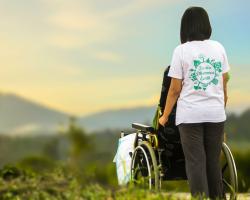Motion sickness is a condition which manifests itself while travelling by various means of transport. Dizziness, nausea and vomiting – its most common symptoms and signs – can be alleviated by taking medications and observing certain rules.
This affliction is caused by the disagreement between the visual stimuli and the vestibular system’s (inner ear) sense of movement. During travel, the visual system detects motion but the vestibular system, responsible for balance, does not sense a change in the position of the body. It responds, however, to breaking, accelerating and turning.
Children are most vulnerable
“Motion sickness does not afflict every one. While the visual perception is the same, the response is a matter of individual sensitivity, which is, as a rule, stronger in children. Some people start feeling bad as soon as they board a bus, a car or a ship," Doctor Erita Filipek, the University Centre of Ophthalmology and Oncology in Katowice, explained.
Motion sickness manifests itself by dizziness, headache and nausea, and also mouth dryness or salivation, excessive sweating and vomiting.
Most patients develop these symptoms while travelling on a seat facing backwards. “The backward-moving images that your eyes perceive as you travel may cause optokinetic nystagmus and elicit vestibular responses. The reason why this happens is that the images are moving away from us in the way we first see them clearly and then, as they shift and move ahead, they become blurry. When we are travelling facing forwards, the images are approaching us and we see them more clearly, they do not fade," Doctor Filipek explained.
Preparing for the travel
“Do not eat too much before the journey; also, avoid carbonated and sweet drinks. Mineral water or a mild tee is the best choice. It is also a good idea to take some motion sickness medication," Doctor Filipek advised.
There is a wide selection of pills, lozenges, syrups and lollypops for children, sticking plasters and even armbands that will help you overcome motion sickness.
Patients who suffer from motion sickness while travelling should choose seats facing forwards and, in the case of buses and trains, situated as far from the axle as possible, in the mid-section of the vehicle. While flying on a plane, choose a seat over the wing, most preferably by the window.
While travelling, you should look into the horizon, focusing your gaze on a fixture in the landscape. Also, it might be more comfortable to assume a half-lying position, with your head propped up on something stable. You should regularly ventilate the vehicle and make stops to catch some fresh air. If you feel nauseous, close your eyes, breathe deep and try to get some fresh air. It is a good idea to have a bag in which you can vomit.
Usually, the condition wears off after travel without any complications, though intensive vomiting can lead to weakness and dehydration.









Comments (0)